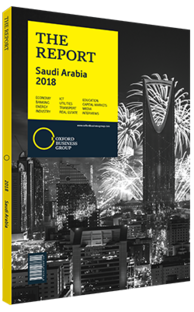Ali Alhazmi, Governor, Saline Water Conversion Corporation (SWCC): Interview

Interview: Ali Alhazmi
What challenges does the efficiency and reliability of Saudi’s desalination network face?
ALI ALHAZMI: Although our latest plant at Ras Al Khair (RAK) operates at around 55% efficiency, the majority of our plants have less than 30% efficiency, and some are over 30 years old. As we move towards privatisation, we are working with international consultants to improve our operational excellence and efficiency in desalination plants; over 40% efficiency can be considered competitive globally. Our efficiency strategy focuses on five pillars: human resources, reliability, profitability, energy saving, and health, safety and environment (HSE). We are working to identify gaps in our HSE systems to reach the ISO 14,000 standards, which are being achieved at the RAK plant. We have produced reliability targets in line with two international key performance indicators: mechanical availability and utilisation. Availability in our desalination system has recently improved by 10%, and we are continually looking to increase that figure by simply shifting towards a more commercial mindset and improve utilisation by 19%.
In regard to profitability, we are targeting areas that will improve production by 5-10%, ultimately increasing the capacity of our desalination plants from 4.7m cu metres daily to 5m cu metres. The current capital cost per cubic metre is around $ 1100-1200 for reverse osmosis (RO) technology.
How are new desalination technologies and capacity being utilised by the SWCC?
ALHAZMI: Multi-stage flash (MSF) evaporators account for about 80% of production. We are now moving towards RO which is the least expensive technology per cubic metre. At RAK, 70% of the 1050m cu metres of production comes from MSF and 30% from RO. The current shift towards RO is due to the recent realisation that although we have historically focused on both water and electricity, we should separate production and focus on one area to maximise return on investment. We have four upcoming projects. The Jubail-3 plant will produce 3000 MW of electricity and 1.17m cu metres of water daily when operations begin in 2021-22. On completion in 2022, the Rabigh and Yanbu plants will both produce 600,000 and 450,000 cu metres daily through RO technology; Rabigh will serve Makkah and Jeddah. Finally, the Shuqaiq plant will supply Jazan and Asir with 380,000 cu metres daily.
We want to pioneer the most cost-effective desalination production globally, and some of our plants now produce water at approximately SR2.5 ($0.67) per cu metres, down from SR3 ($0.80). Through improvement on water transmission systems we can minimise losses and increase efficiency, especially between Jubail and Riyadh, for example.
What strategy is currently being adopted to prepare the sector for privatisation?
ALHAZMI: Credit rating agencies are adopting a plant rating system that we plan to trial in the Kingdom. As the RAK plant is brand new, a “Triple-A” rating may raise its valuation. Similarly, we will identify technical measures to rehabilitate any plants receiving a “Triple-C” rating. The rating system is meant to provide confidence and information to investors looking to operate the plant in the future. In the case of Al Khobar, for instance, we will replace the less efficient MSF process with small-sized RO systems, and the rating will provide external certification that the plant is operable for another 15-20 years. These initial measures have been approved by the Ministry of Water, Environment and Agriculture, and we are planning on completing the rating processes for Jubail, Al Khobar and RAK in 2018. Our dream is for Saudi Arabia to capitalise on its expertise in the desalination industry, and to develop plants and provide new desalination technology and services to neighbouring countries.
You have reached the limit of premium articles you can view for free.
Choose from the options below to purchase print or digital editions of our Reports. You can also purchase a website subscription giving you unlimited access to all of our Reports online for 12 months.
If you have already purchased this Report or have a website subscription, please login to continue.

